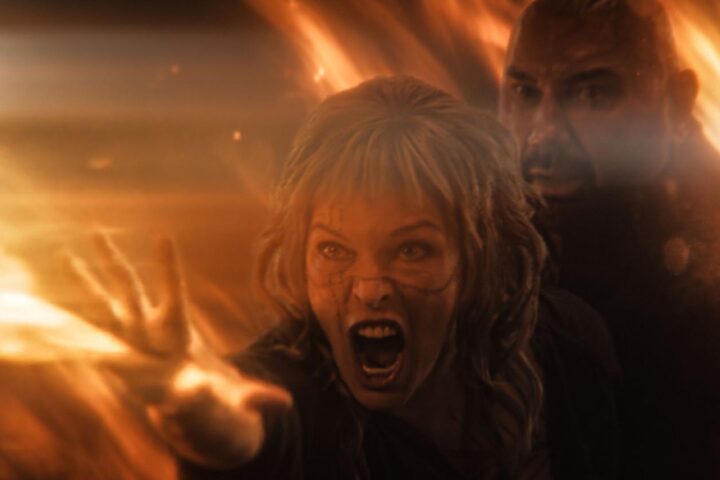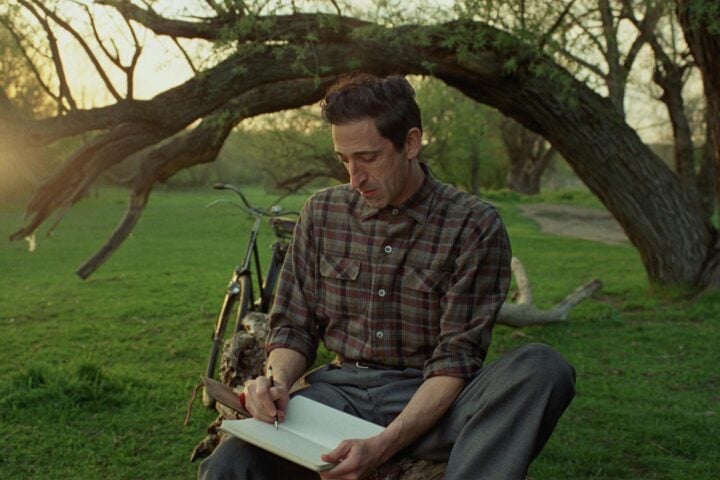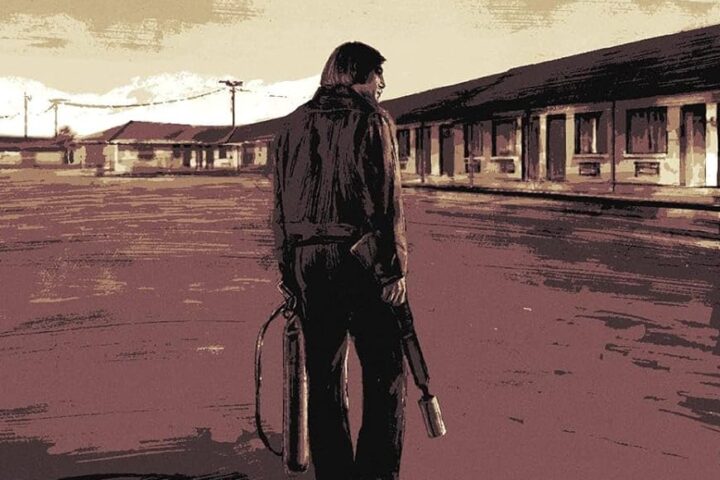Frank Herbert’s Dune has long been viewed as unadaptable. Alejandro Jodorowsky’s crack at the epochal tome collapsed under the weight of the filmmaker’s gonzo aspirations, never leaving the preproduction phase. No less notorious is David Lynch’s completed 1984 adaptation, a heavily studio-meddled vision that was ill-received and even disowned by its maker. A couple of well-regarded TV miniseries would follow, but the prospect of a definitive, uncompromised big-screen adaptation continued to dim until Denis Villeneuve revealed that he was approached to helm a new take on Herbert’s book. But sadly, when the dust—or, rather, sand—finally settles on this new Dune, the most unexpected and depressing thing about it is the sheer ordinariness of it all.
In the year 10,191 A.G., the hostile desert planet of Arrakis, a.k.a. Dune, is put under the care of the House Atreides, led by the compassionate Duke Leto Atreides (Oscar Isaac). It’s an important appointment, as Arrakis is coveted for its natural production of “spice,” a mystical sand-like substance with life-enhancing qualities. Previously, the planet was ruled by the villainous House Harkonnen, which ravaged the lands for as much spice as they could, all the while waging war against the native Fremen community. By contrast, Duke Leto hopes to work with and learn from the Fremen, who live clandestinely in caverns underneath the sand.
The space travel to Arrakis is depicted with the assurance and control, not to mention meticulous eye for detail, for which Villeneuve has become known. Spaceships float through the cosmos in balletic splendor, lending new credence to the term space opera. Dune proceeds with similar grandiosity across scenes set on various house planets, from the large welcoming ceremony for the Herald of the Change (Benjamin Clémentine) and a group of Daft Punk-styled Spacing Guild Representatives on the lush ocean planet of Caladan to a detour into the gothic hellscape of Harkonnen, a world ruled by the wicked Baron Vladimir Harkonnen (Stellan Skarsgård, suggesting a cross between Jabba the Hut and Marilyn Manson).
The film was shot for the IMAX format, and in certain scenes the aspect ratio opens up to 1.90:1. The effect is glorious, but you never shake the impression that even as this Dune breathes new life into Herbert’s material, it still suggests something that’s been left behind—namely by the plethora of sci-fi films that the book inspired.
Villeneuve’s Dune does a lot of cagey work on the level of parable, and it all comes at the cost of character. Paul Atreides (Timothée Chalamet), Duke Leto’s son and heir and the story’s sullen hero, possesses superhuman mental abilities inherited from his mother, the perpetually torn Lady Jessica (Rebecca Ferguson), and sufficient training in martial arts and swordplay. From Paul making his way to Arrakis to scenes of him on spice-harvesting duty, we’re constantly being reminded that he may be (and probably is) “the one,” but unlike, say, Neo in The Matrix, we never really get to see the transformation that makes the messiah.
When a battle suddenly erupts on Arrakis, as the Harkonnens return to reclaim their spice paradise, Paul is shielded by his parents, shuttled into bunkers and hidden away while foggy and indistinct skirmishes between anonymous soldiers play out in an outpost above ground. Refreshingly, the film shares Lady Jessica’s unease about her son’s fate, and as the eternally brooding Paul, Chalamet certainly gets that his character is being steered away from his promise. Speaking in affectless monotone that feels more than a little wooden, he suggests a figural subject that only exists to be framed standing on cliffs and blankly staring into the horizon as if in search, like Villeneuve’s images, for some kind of meaning.
Of course, all that searching is more or less by design. Billing itself as “Part One” in the opening title card, Villeneuve’s Dune ends up feeling like an extended prologue for what one can only hope will be a sequel that will clarify its parables and paradoxes, and really delve into the minds of its characters. And if that film comes to be made, you may also hope that it isn’t practically smothered to death by an ethnographic, drone-like Hans Zimmer score.
We don’t even get to take in the full scope of the sweeping desert landscape of Arrakis until the film’s final stretch, when Paul and Lady Jessica are on the run and encounter a tribe of Fremen led by the fierce Stilgar (Javier Bardem). It’s here that the characters finally get up close and personal with the gargantuan sandworms that are the Dune universe’s most recognizable creatures, but it’s only just a glimpse. That sort of teasing is Villeneuve’s m.o., which is engineered into almost every aspect of a story about the possibility of things to come.
The meeting with Stilgar, for one, is an opportunity for Paul to prove his manhood and leave us wondering what will come of him winning acceptance into the Fremen society. “This is only the beginning,” declares young Fremen warrior Chani (Zendaya) as she and her blue-eyed people lead Paul and Lady Jessica deeper into the desert at film’s conclusion, but given the two-plus hours of dull political maneuvering and meaningless effects-laden warfare that precedes this proposition, you may not be inclined to follow them.
Image/Sound
Dune’s palette of steel grays and blazing desert browns is perfectly reflected on Warner Home Video’s UHD transfer. The disc captures the sharp, stark beauty of the film, with detailed facial textures, clear color balance, and a rich array of black levels for the many shadow-blanketed scenes. The scene of Paul enduring the gom jabbar test offers a particularly clear view into the strengths of the disc, capturing numerous subtle gradations of muted color while allowing rich definition to faces in low lighting. Even better, though, is the reference-quality Dolby Atmos track. The overwhelming nature of the film’s soundtrack, from the roar of colossal ship engines to the rumble of sandworm burrowing to, of course, the blaring Hans Zimmer score, is perfectly balanced. Not a single line of dialogue is suffocated beneath the near-constant din.
Extras
An accompanying Blu-ray contains a clutch of brief featurettes related to specific aspects of Dune, from a focus on the major characters to a breakdown of one of the action scenes. The most interesting of these detail the production design, of which a shocking amount was physically crafted rather than computer-generated. The tactile quality of the massive sets comes through in the finished product, and seeing the intricate level of planning that went into capturing the tone and nuances of the book makes the film’s scale even more impressive.
Overall
Denis Villeneuve’s ambitious adaptation of Frank Herbert’s novel gets a 4K release that, with its crystal-clear images and boisterous soundtrack, makes the most of the UHD format.
Since 2001, we've brought you uncompromising, candid takes on the world of film, music, television, video games, theater, and more. Independently owned and operated publications like Slant have been hit hard in recent years, but we’re committed to keeping our content free and accessible—meaning no paywalls or fees.
If you like what we do, please consider subscribing to our Patreon or making a donation.





